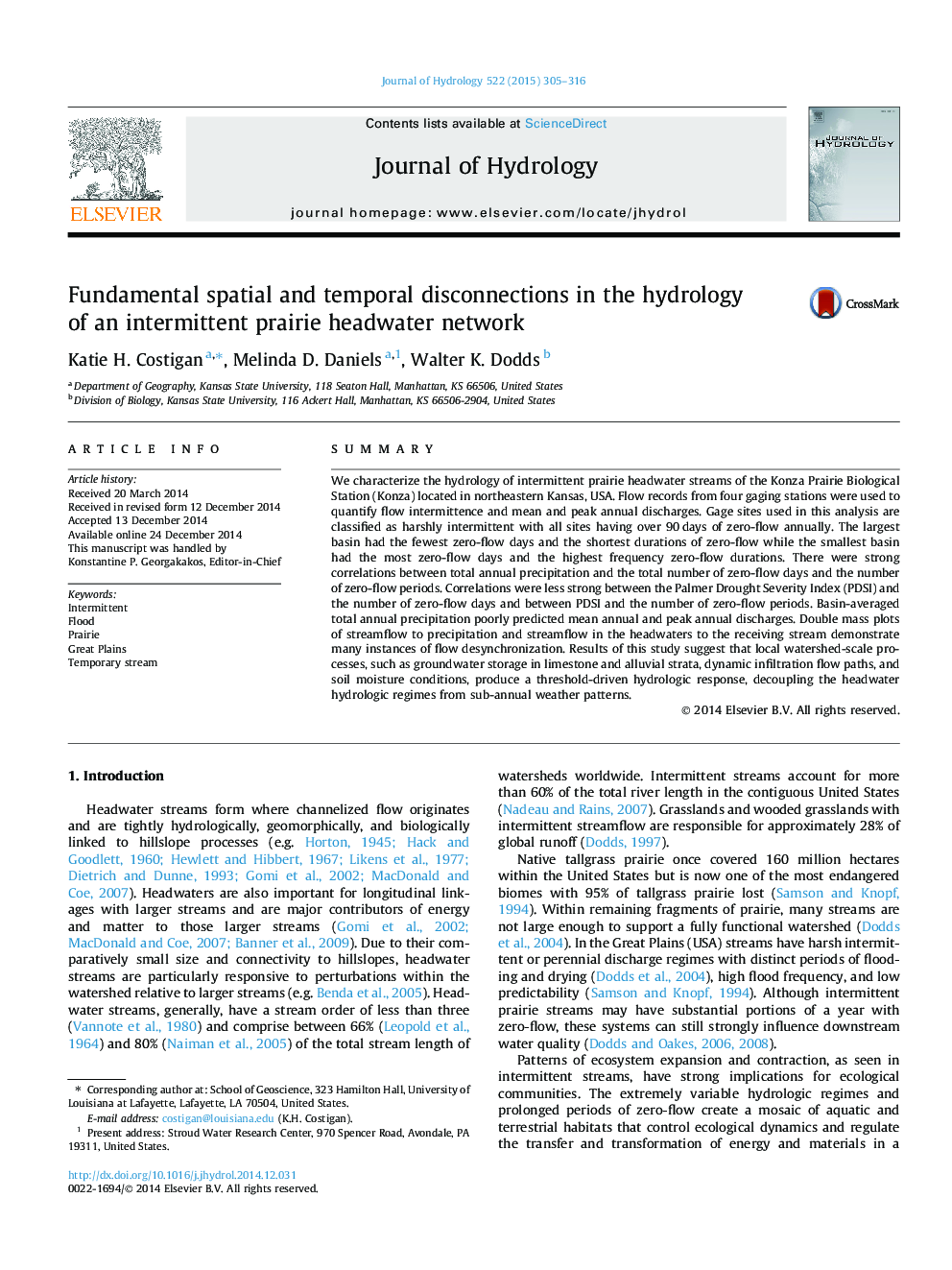| Article ID | Journal | Published Year | Pages | File Type |
|---|---|---|---|---|
| 6411304 | Journal of Hydrology | 2015 | 12 Pages |
â¢We characterize the precipitation-runoff regime of an intermittent prairie headwater stream network.â¢We find no sub-annual correlation between precipitation and runoff.â¢Prairie headwater hydrologic regimes are decoupled from sub-annual weather patterns.â¢We find a strong threshold-driven hydrologic response.â¢Stream network segments are frequently disconnected longitudinally.
SummaryWe characterize the hydrology of intermittent prairie headwater streams of the Konza Prairie Biological Station (Konza) located in northeastern Kansas, USA. Flow records from four gaging stations were used to quantify flow intermittence and mean and peak annual discharges. Gage sites used in this analysis are classified as harshly intermittent with all sites having over 90Â days of zero-flow annually. The largest basin had the fewest zero-flow days and the shortest durations of zero-flow while the smallest basin had the most zero-flow days and the highest frequency zero-flow durations. There were strong correlations between total annual precipitation and the total number of zero-flow days and the number of zero-flow periods. Correlations were less strong between the Palmer Drought Severity Index (PDSI) and the number of zero-flow days and between PDSI and the number of zero-flow periods. Basin-averaged total annual precipitation poorly predicted mean annual and peak annual discharges. Double mass plots of streamflow to precipitation and streamflow in the headwaters to the receiving stream demonstrate many instances of flow desynchronization. Results of this study suggest that local watershed-scale processes, such as groundwater storage in limestone and alluvial strata, dynamic infiltration flow paths, and soil moisture conditions, produce a threshold-driven hydrologic response, decoupling the headwater hydrologic regimes from sub-annual weather patterns.
